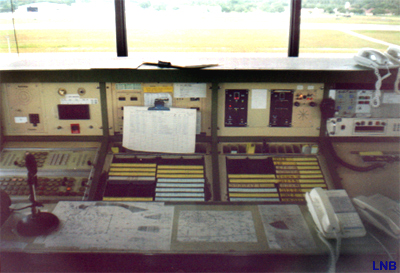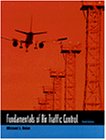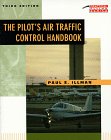![]()
Air Traffic Control
Brief history of Air Traffic Control
A complete flight from origin to destination comprised of following steps
-
Pre-flight -This portion of the flight starts on the ground and includes flight checks, engine startup, push-back from the apron parking position and taxi to the runway.
-
Take-off - The pilot powers up the aircraft and speeds down the runway.
-
Departure - The plane lifts off the ground and climbs to a cruising altitude.
-
En route - The aircraft travels through one or more center airspaces and nears the destination airport.
-
Descent - The pilot descends and maneuvers the aircraft to the destination airport.
-
Approach - The pilot aligns the aircraft with the designated landing runway with the guidance of ground equipment.
-
Landing - The aircraft lands on the designated runway, taxis to the destination gate and parks at the terminal.
Katunayaka Control tower (Control Position 2)
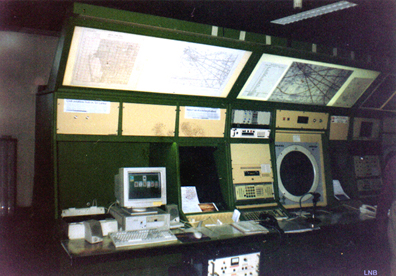
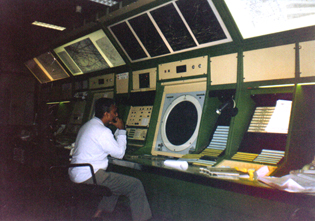
Katunayaka Radar control room
The
air traffic control system is a vast network of people and equipment that
ensures the safe operation of commercial and private aircraft. Air traffic
controllers coordinate the movement of air traffic to make certain that planes
stay a safe distance apart. Their immediate concern is safety, but controllers
also must direct planes efficiently to minimize delays. Some regulate airport
traffic; others regulate flights between airports.
Although
airport tower or terminal controllers watch over all planes traveling through the
airport’s airspace, their main responsibility is to organize the flow of
aircraft in and out of the airport. Relying on radar and visual observation,
they monitor each plane to ensure a safe distance between all aircraft and to
guide pilots between the hangar or ramp and the end of the airport’s airspace.
In addition, controllers keep pilots informed about changes in weather
conditions such as wind shear—a sudden change in the velocity or direction of
the wind that can cause the pilot to lose control of the aircraft.
During
arrival or departure, a controller direct each plane. As a plane approaches an
airport, the pilot radios ahead to inform the terminal of its presence. The
controller in the radar room, just beneath the control tower, has a copy of the
plane’s flight plan and already has observed the plane on radar. If the path
is clear, the controller directs the pilot to a runway; if the airport is busy,
the plane is fitted into a traffic pattern with other aircraft waiting to land.
But this is hardly observed in Bandaranaike International Airport because of the
small number of aircraft movement. As
the plane nears the runway, the pilot is asked to contact the tower and the
controller, who also is watching the plane on radar, monitors the aircraft the
last mile or so to the runway, delaying any departures that would interfere with
the plane’s landing. Once the plane has landed, a ground controller in the
tower directs it along the taxiways to its assigned parking point. The tower air
traffic controller usually works entirely by sight, but may use radar if
visibility is very poor.
The
procedure is reversed for departures. The aerodrome controller directs the plane
to the proper runway and then informs the pilot about conditions at the airport,
such as weather, speed and direction of wind, and visibility. The controller
also issues runway clearance for the pilot to take off. Once in the air, the
plane is guided out of the airport’s airspace by the departure controller
(which is called Director in Sri Lanka). After each plane departs, airport tower
controller notifies Director controllers who will next take charge and consequently to the area
controlled center.
To
prepare for planes about to enter the Sri Lanka’s airspace, the radar
controller organizes flight plans. If two planes are scheduled to enter the Sri
Lanka’s airspace at nearly the same time, location, and altitude, ATC may
arrange with the preceding control unit for one plane to change its flight path.
As a plane approaches a one’s airspace, the radar controller accepts
responsibility for the plane from the previous controlling area. The controller
also delegates responsibility for the plane to the next controlling area when
the plane leaves the airspace.
Radar
controllers warn pilots about nearby planes, bad weather conditions, and other
potential hazards. Two planes on a collision course will be directed around each
other. If a pilot wants to change altitude in search of better flying
conditions, the controller will check to determine that no other planes will be
along the proposed path. As the flight progresses, the ATC responsible for the
aircraft notifies the area control center in charge and vice versa. Through
coordination, the plane arrives safely at its destination.
Both
area and approach controllers sometimes control several planes at a time; often,
they have to make decisions about completely different activities. For example,
a controller might direct a plane on its landing approach and at the same time
provide pilots entering the airport’s airspace with information about
conditions at the airport. But the situation in Sri Lanka is fairly easy as
number of landings and arrivals are accounted to 30 to 40 a day.
While instructing these pilots, the controller also would observe other
planes in the vicinity, such as those in a holding pattern waiting for
permission to land, to ensure that they remain well separated.
Currently,
the FAA is in the midst of developing and implementing a new automated air
traffic control system. As a result, more powerful computers will help
controllers deal with the demands of increased air traffic. Some traditional air
traffic controller tasks—like determining how far apart planes should be
kept—will be done by computer. Present separation standards call for a
2,000-foot vertical spacing between two aircraft operating above 29,000 feet and
flying the same ground track. With the aid of new technologies, the FAA will be
able to reduce this vertical separation standard to 1,000 feet. Improved
communication between computers on airplanes and those on the ground also is
making the controller’s job much
easier.
At
present controllers sit at consoles with green/amber glowing screens that
display radar images generated by a computer. In the future, controllers will
work at a modern workstation computer that depicts air routes in full-color on a
20- by 20-inch screen. The controllers will select radio channels simply by
touching on-screen buttons instead of turning dials or switching switches. The
new technology will also enable controllers to zoom in on selected corners of
the air space that is their responsibility and get better images of moving
traffic than is possible with today’s machines. However, the new automated air
traffic control system will not be fully operational until at least 2003.
The
FAA is also considering implementing a system called "free flight"
which would give pilots much more freedom in operating their aircraft without
the interaction of Air Traffic Controllers. The change will require new
concepts of shared responsibility between controllers and pilots. Air traffic
controllers will still be central to the safe operation of the system, but their
responsibilities will eventually shift from controlling to monitoring flights.
At present, controllers assign routes, altitudes, and speeds. Under the new
system, airlines and pilots would choose them. Controllers would intervene only
to ensure that aircraft remained at safe distances from one another, to prevent
congestion in terminal areas and entry into closed airspace, or to otherwise
ensure safety. Today’s practices often result in planes zigzagging from point
to point along corridors rather than flying from city to city in a straight
line. This results in lost time and fuel. However, it may be several years
before a free flight system is implemented, despite its potential advantages.
For the system to work, new equipment must be added for pilots and controllers,
and new procedures developed to accommodate both the tightly controlled and
flexible aspects of free flight. Budget constraints within the Government may
delay or slow implementation.
Working
Conditions of busy Airports
During
busy times, controllers must work rapidly and efficiently. This requires total
concentration to keep track of several planes at the same time and make certain
all pilots receive correct instructions. The mental stress of being responsible
for the safety of several aircraft and their passengers can be exhausting for
some persons. Employment of air traffic controllers is expected to show little
or no change through the
year 2008. Employment growth is not expected to keep
pace with growth in the number of aircraft flying because of the implementation
of a new air traffic control system over the next 10 years. This computerized
system will assist the controller by automatically making many of the routine
decisions. Automation will allow controllers to handle more traffic, thus
reducing their workload 50 to 70 present and
increasing the productivity.
Best selling books about Air Traffic Control (Click for details)
![]()
